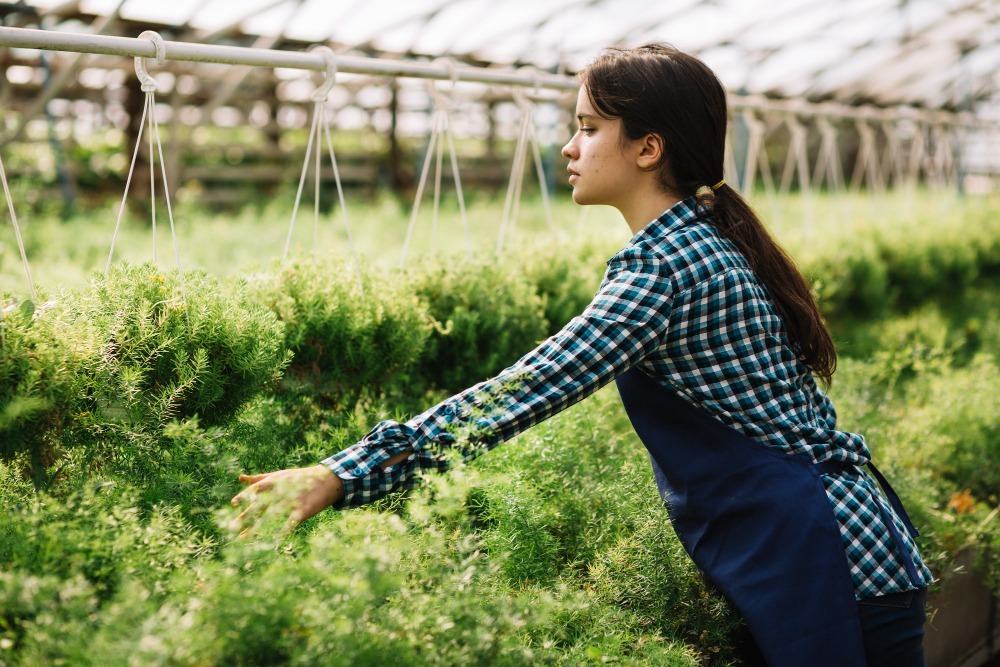In modern gardening, efficiency and productivity are key. Whether you have a small backyard plot, urban balcony, or a community garden plot, maximizing yield from every square foot is not just a goal but a practical necessity. This guide explores proven techniques to help you achieve abundant harvests in limited spaces.
Techniques to help you achieve abundant harvests in limited spaces
- Planning Your Garden Layout for Maximum Yield
- Importance of Layout: Designing your garden layout strategically can significantly increase yield.
- Companion Planting: Pairing compatible plants that benefit each other’s growth.
- Vertical Gardening: Utilizing vertical space for climbing plants and trellises.
- Succession Planting: Planting new crops as soon as one is harvested to ensure continuous production.
- Intensive Planting Methods
- Square Foot Gardening: Dividing the garden into square foot sections to maximize space and simplify planning.
- Raised Beds: Benefits of raised beds for better soil control and improved drainage.
- Interplanting and Interlocking: Placing plants close together to minimize wasted space.
- Soil Preparation and Management
- Soil Health: Importance of nutrient-rich soil and pH balance.
- Composting: Creating and using compost to enrich soil fertility.
- Container Gardening: Tips for growing in containers for flexibility and space optimization.
- Selecting High-Yield Plants and Varieties
- Choosing Suitable Plants: Vegetables and fruits that thrive in your climate and space.
- Dwarf and Compact Varieties: Maximizing productivity with smaller plants that yield big results.
- Companion Planting: Plant combinations that deter pests or enhance growth.
- Watering and Irrigation Systems
- Efficient Water Use: Techniques to conserve water while ensuring plants receive adequate hydration.
- Drip Irrigation: Benefits of drip systems for precise watering and water conservation.
- Mulching: Using mulch to retain moisture and reduce weed growth.
- Pest and Disease Management
- Organic Pest Control: Natural methods to deter pests without harmful chemicals.
- Companion Planting for Pest Management: Using companion plants to repel pests or attract beneficial insects.
- Early Detection and Treatment: Monitoring plants for signs of pests or diseases to prevent outbreaks.
- Harvesting Techniques for Continuous Yield
- Harvest Timing: Knowing when and how to harvest for maximum flavor and nutrition.
- Succession Planting: Scheduling plantings to stagger harvest times and extend the growing season.
- Crop Rotation: Rotating crops to minimize soil depletion and pest buildup.
- Maintaining Garden Health Throughout the Season
- Routine Maintenance: Tasks like weeding, pruning, and thinning for optimal plant health.
- Soil Testing: Importance of testing soil periodically to adjust nutrient levels.
- Cover Cropping: Using cover crops to protect and enrich the soil during offseasons.
- Tools and Equipment for Efficient Gardening
- Essential Tools: Must-have tools for small-space gardening and their uses.
- Garden Gadgets: Innovative gadgets to simplify gardening tasks and improve efficiency.
- DIY Solutions: Budget-friendly DIY projects for custom garden setups.
- Case Studies and Success Stories
- Real-life Examples: Profiles of successful gardeners who have implemented these techniques.
- Lessons Learned: Insights and tips from experienced gardeners to inspire and inform.
FAQs
- What are the best vegetables to grow in a small garden? Opt for compact varieties of tomatoes, peppers, lettuce, and herbs. Root vegetables like radishes and carrots also work well.
- How do you maximize space in a small garden? Use vertical gardening techniques such as trellises and hanging baskets. Implement square foot gardening to maximize planting density.
- How can I improve soil quality in a small garden? Amend soil with compost and organic matter regularly. Practice crop rotation and use cover crops to enhance fertility.
- What is succession planting and how does it help? Succession planting involves planting new crops as soon as one harvest ends. It ensures continuous production and maximizes space usage.
- How often should I water plants in a small garden? Water deeply but infrequently to encourage deep root growth. Use drip irrigation or soaker hoses to minimize water waste.
- What are some natural pest control methods for a small garden? Companion planting with pest-repelling plants. Applying organic sprays like neem oil or using beneficial insects like ladybugs.
- When should I harvest vegetables for maximum yield? Harvest vegetables when they are mature but before they become overripe. Regular harvesting encourages plants to produce more.
- How can I extend the growing season in a small garden? Use row covers or cold frames to protect plants from frost. Plant cold-hardy vegetables in late summer for a fall harvest.
- What are the benefits of using raised beds in a small garden? Raised beds improve soil drainage, provide better soil structure, and make gardening more accessible. They also help in organizing plantings.
- How can I save seeds from my garden for the next season? Allow seeds to fully mature on the plant. Harvest and dry them thoroughly before storing in a cool, dry place.
- What are some space-saving techniques for vertical gardening? Utilize trellises, vertical planters, and hanging baskets to grow vining plants like beans, cucumbers, and peas vertically.
- How can I manage pests without using chemical pesticides? Implement companion planting, such as planting marigolds to deter pests, or using physical barriers like row covers to protect plants.
- What are the benefits of intercropping in a small garden? Intercropping involves planting different types of crops together. It helps maximize space, reduce pests and diseases, and improve soil health through diverse root structures.
- How do you determine the ideal plant spacing in a square foot garden? Follow planting guidelines for each crop. For example, plant lettuce 4-6 inches apart, while tomatoes may need 12-18 inches between plants, depending on the variety.
- What is the best way to maintain soil fertility in a small garden? Use organic fertilizers like compost and aged manure. Consider cover cropping during off-seasons to add nutrients and improve soil structure.
- How can I effectively manage weeds in a small garden? Mulch around plants to suppress weed growth. Hand-pull weeds regularly before they become established and compete with crops for nutrients.
- What are some tips for extending the harvest season? Succession plant crops with varying maturity times. Start seeds indoors or use cold frames to start planting earlier in the spring.
- How can I protect plants from extreme weather conditions in a small garden? Use shade cloth during hot weather and provide wind protection with fences or trellises. Cold frames and row covers can protect plants from frost.
- What are some creative container gardening ideas for small spaces? Use repurposed containers like buckets, old tires, or pallets. Vertical planters and window boxes are also excellent options for growing herbs and small vegetables.
- How do I know when to harvest herbs for the best flavor? Harvest herbs early in the morning after the dew has dried but before the sun is too strong. Pinch off leaves regularly to encourage bushier growth.
Conclusion
Achieving maximum yield from every square foot of your garden requires careful planning, effective management, and ongoing attention. By implementing these proven techniques and strategies, you can transform even the smallest garden space into a productive and rewarding oasis of fresh produce.


